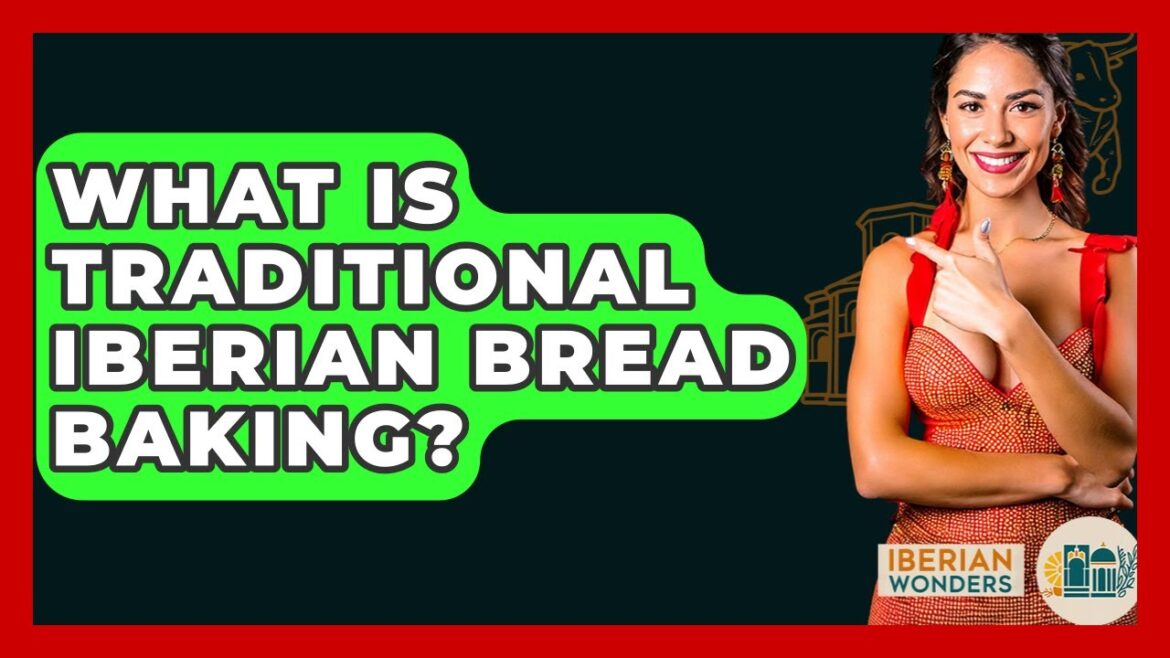What Is Traditional Iberian Bread Baking? In this video, we will take you on a journey through the world of traditional Iberian bread baking. Discover the unique techniques and ingredients that make this culinary art form a vital part of the Iberian Peninsula’s cultural heritage. We will explore the significance of Candeal wheat and how it contributes to the texture and flavor of various bread types.
Learn about the meticulous process that bakers follow, from slow fermentation to the use of natural starters, and find out how these methods have been preserved over generations. We will highlight the regional variations of bread found in Spain and Portugal, showcasing the diverse flavors and ingredients that define each type.
As we discuss the historical context of bread baking, we will also touch upon the challenges faced by traditional methods in the modern age and how some bakers are adapting to maintain these time-honored practices. This video aims to celebrate the artistry of bread making and the community spirit that surrounds it.
Join us for this engaging exploration of traditional Iberian bread baking and subscribe to our channel for more fascinating content about the rich cultural traditions of the Iberian Peninsula.
⬇️ Subscribe to our channel for more valuable insights.
🔗Subscribe: https://www.youtube.com/@IberianWonders/?sub_confirmation=1
#IberianBread #TraditionalBaking #CandealWheat #ArtisanBakers #CulinaryHeritage #SpanishBread #PortugueseBread #BakingTechniques #CulinaryTraditions #FoodCulture #BreadMaking #RegionalVariations #BakingProcess #CommunityBaking #CulinaryDiversity #IberianCuisine
About Us: Welcome to Iberian Wonders, your ultimate gateway to the rich tapestry of the Iberian Peninsula! Join us as we explore the enchanting cultures, breathtaking landscapes, and hidden gems of Spain and Portugal. Our channel is dedicated to showcasing the diverse heritage, culinary delights, and fascinating stories that define this vibrant region.
What is traditional Iberian bread baking? Have you ever wondered how traditional bread baking connects to the rich cultural heritage of the Iberian Peninsula? This fascinating process is not just about making bread. It reflects the agricultural practices and traditions that have shaped the region for centuries. Let’s take a closer look at what makes Iberian bread baking so special. At the heart of traditional Iberian bread is the use of candle wheat. This unique Durham variety is known for its high gluten content which helps create light and spongy loaves. Breads like candal, bragado and sato are made using this wheat and they requiring labor intensive techniques that have been passed down through generations. The dough is often rolled out with a traditional rolling pin or a two-cylinder machine called a bragadora which helps develop the dough’s elasticity. The bread making process begins with a slow fermentation. Bakers often use natural starters or active dry yeast, allowing the dough to rise slowly. This meticulous kneading strengthens the dough and proofing takes place in warm environments to fully activate the yeast. For example, the dough may rest for 1 to 1 and 1/2 hours before shaping, followed by a final proofing of 20 to 40 minutes. Baking usually happens in woodfired or modern ovens at temperatures between 180 and 200° C resulting in crusty exteriors and airy interiors. Different regions of the Iberian Peninsula have their own variations of bread. In Spain, panbasico serves as a foundation for many adaptations like the zakes a wheat bread found in the Balieric Islands. In Portugal, you will find paado, a kneaded bread, and rega, a sweet braided bread. These variations often incorporate local ingredients such as olive oil or honey, showcasing the culinary diversity of the region. Historically, bread baking in Iberia was essential for preserving wheat harvests and creating calorie dense staples. Today, while traditional methods face challenges from modern mechanization, many rural areas still embrace arteasonal practices. The process of baking bread not only provides food, but also strengthens community bonds. As villagers often share ovens or create festive breads for celebrations, modern bakers are finding ways to blend tradition with efficiency. They might hand knead dough while also using mechanical tools. For instance, they may divide dough into portions, roll it with fillings like butter or sugar, and dredge it in breadcrumbs before baking. Temperature control and timing are crucial, with recipes often specifying exact proofing durations and oven adjustments to prevent burning. Traditional Iberian bread baking is a beautiful reflection of the region’s agricultural roots. It highlights the quality of wheat and the skill of bakers, creating a staple that remains culturally and nutritionally important. So the next time you enjoy a slice of Iberian bread, remember the rich history and traditions that went into making it.


Dining and Cooking